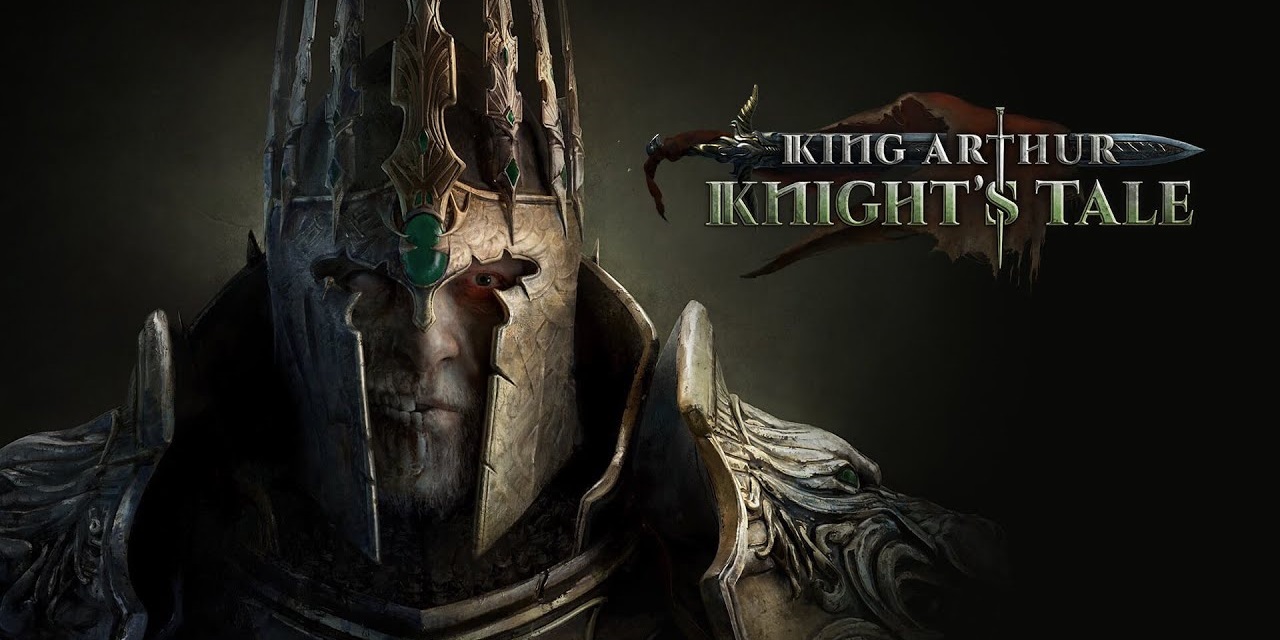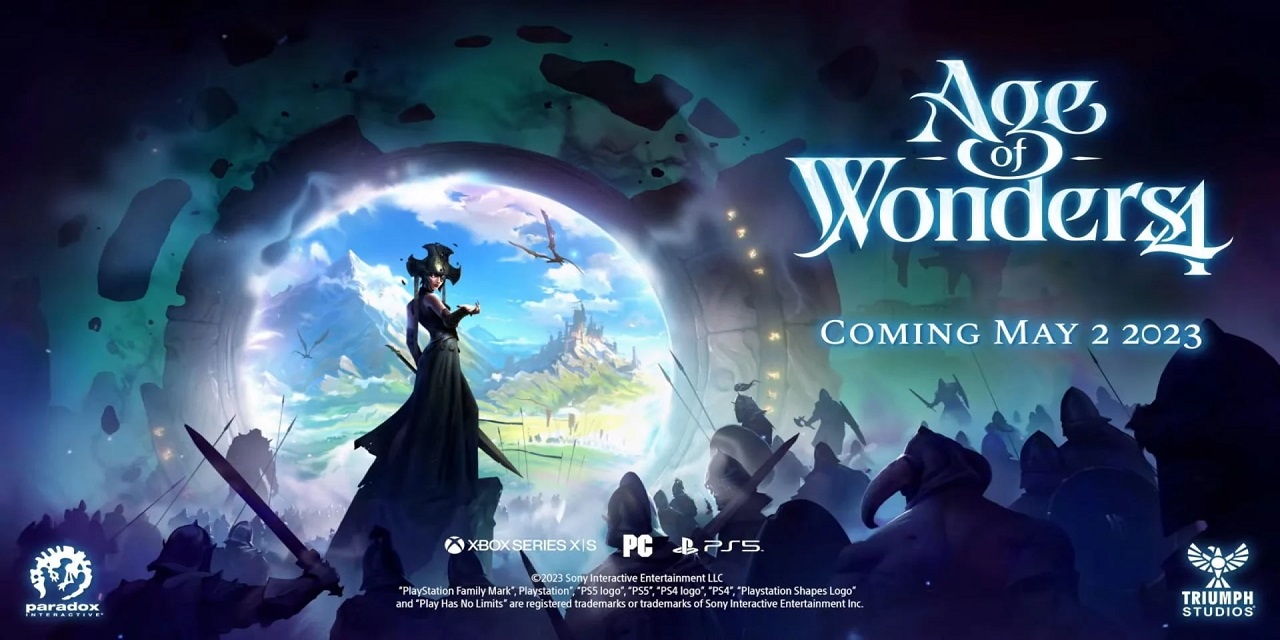King Arthur: Knight’s Tale is a tactical turn-based RPG, developed by Neocore Games and released on April 27, 2022. It had been in early access for over 12 months and during that time I got to preview Acts 1 and 2 and very much enjoyed my time, though it was a challenging learning experience. Upon release, my progress was reset so I started from scratch and playing on normal difficulty, my prior knowledge helped me get through Act 1 much quicker and managing to avoid any injuries to my party.
You play as Sir Mordred, nemesis to King Arthur, after a devastating battle where both men are killed by each other’s final blows. The Lady of the Lake, ruler of the mystical lands of Avalon, brings both of you back to life to fight again in dark and twisted lands which are a resting place for fallen heroes. She requires that Mordred finish what he started and kill King Arthur, freeing Avalon from the curse. Camelot lies in ruins, so we must complete missions to earn gold and resources to raise the buildings of old.

Having played Neocore’s The Incredible Adventures of Van Helsing series of aRPG games, which had some fantastic story elements, I knew the story of this game was going to be interesting to unravel. Through dialogue between the characters and events and mission briefings, the story gives us an interesting and dark twist on the Arthruian tale as you gradually meet other knights of the round table, recruiting some of them to your cause. Each character you meet represents one of five classes in King Arthur: Knight’s Tale.
You start as Sir Mordred who is a defender and quickly meet Sir Kay and Sir Balan who are champions. Next you come across Lady Dindraine as a marksman, Sir Balin is a vanguard, Sir Ector is an arcanist and Sir Leodegrance is a sage. There are 30 heroes total you can meet along your journey with some famous names from Arthurian lore if you’re into that, and as you complete missions and events you will make moral choices that impact the overarching story and the loyalty of your heroes. Choices offered will be represented by a morality ranging from rightful ruler and reckless tyrant to devout Christian and follower of the old-faith.
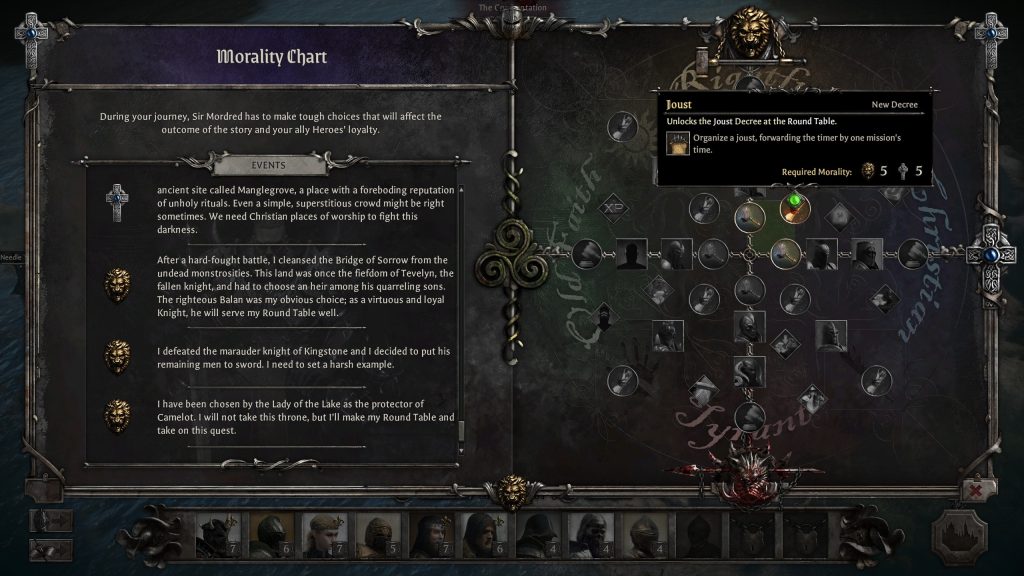
As you make choices, they are recorded on the morality chart, and you can start to plot how you will make future decisions as this will unlock abilities for your party and even heroes later in the game. Each hero’s personality will either align or clash with your decisions, and ultimately some heroes may even leave your party if they are against your ideals. From my experience, I focused on one or two moralities because the requirements to unlock bonuses are quite high. I feel if you tried to strike a balance between all four, you won’t be able to unlock too many bonuses.
When playing through missions in King Arthur: Knight’s Tale, you take control of your party and move about the map much like a party-based RPG where you can change their stance order, loot items and rest at fires to replenish health or armour. However, you cannot alter their inventory mid-mission. You need to change their weapons/armour, trinkets, and potions in the overworld map in between missions. Combat can be brutal, and on my first playthrough during the early access period, I had several party members die on me, and death is permanent.
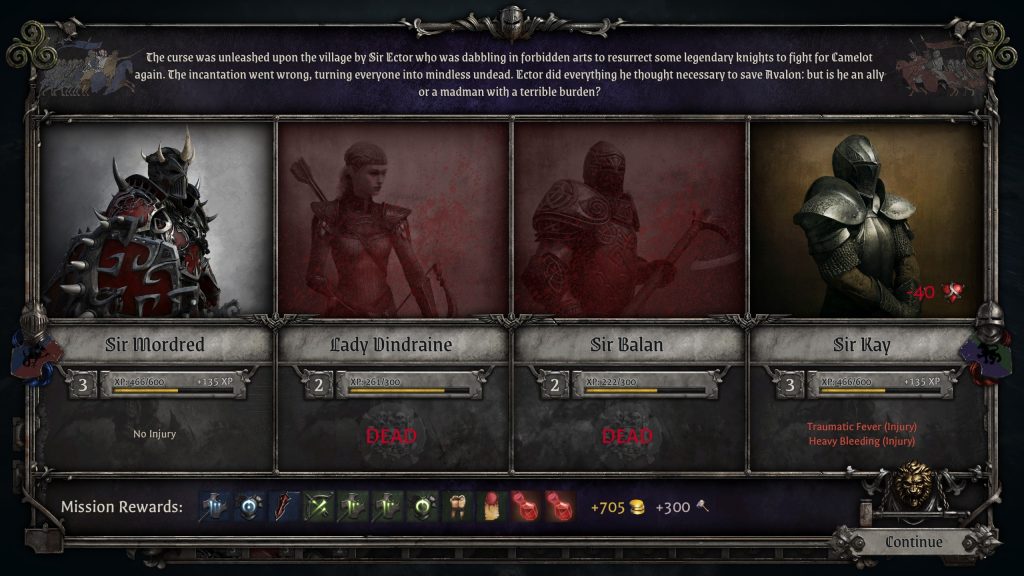
Knowing this, I was much more cautious and strategic when playing post- release. I liked that there was no roll for initiative to set the character order in combat. Instead, your entire team plays their turn and then the enemy has their turn, which meant you could execute some cool tactical manoeuvres together, especially later in the game when you’ve levelled up characters and unlocked some great skill combinations.
Once you come across a combat encounter, sometimes this will be unplanned, and you will fight in your current position with monsters surrounding your party. For major mission battles, you will enter the battle and are able to position each party member individually to maximise your combat strategies and character skill combinations. For example, I would have my marksmen and sages at the back either behind cover or at least behind the melee characters. Sometimes I would skip turns so that the melee monsters would come to my line first one at time as opposed to my guys being surrounded, where other times I was confident to send my party members to handle areas of mobs.
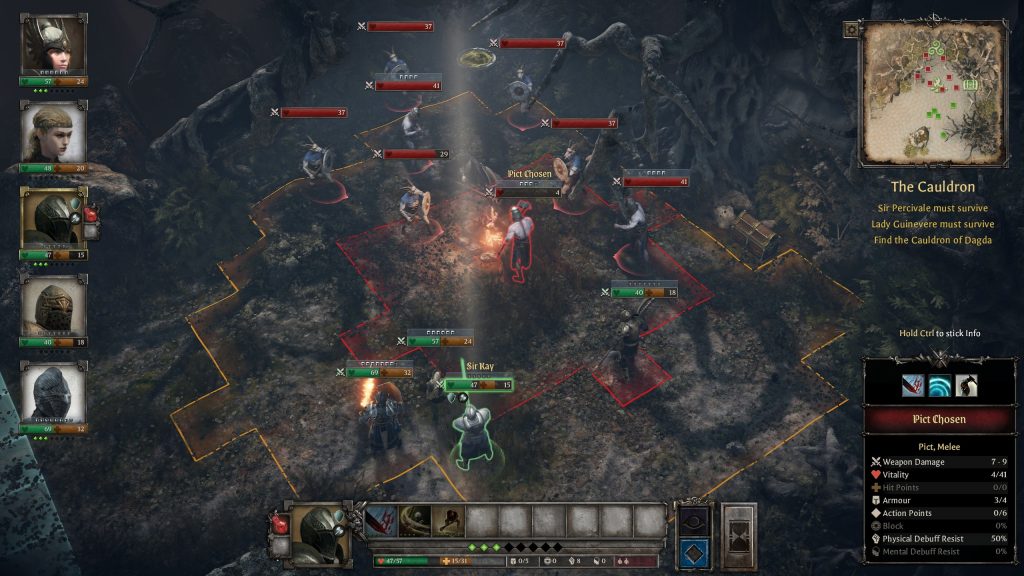
On harder difficulties, and it even happened to me on normal if I positioned my party poorly, or if I forgot about those undead monsters reviving after three turns, injuries to characters can occur often which can be healed back in Camelot. However, those party members will need time to heal so they become unavailable for future missions. As such, it’s best to try finish each battle with no injuries, and I’m not ashamed to say that I save scummed and reloaded multiple times. I just wanted to keep progressing this very cool story and find more characters so that I had backups if any needed healing.
I did have my four favourite characters I liked to use in most missions, made up of Mordred, Kay, Dindraine and Balan, however you need to be mindful of keeping other characters levelled up by playing them in missions or sending them to spend time in the training ground building. This is because, if you lose characters to death or to injury, you want to have reliable backup party members you can substitute for the next mission. You can also respec skill points spent on your heroes if you need to make some changes later. This is done by either spending gold in the training ground in Camelot, or by finding and consuming an item called Tome of Regret that resets the hero’s skill points.
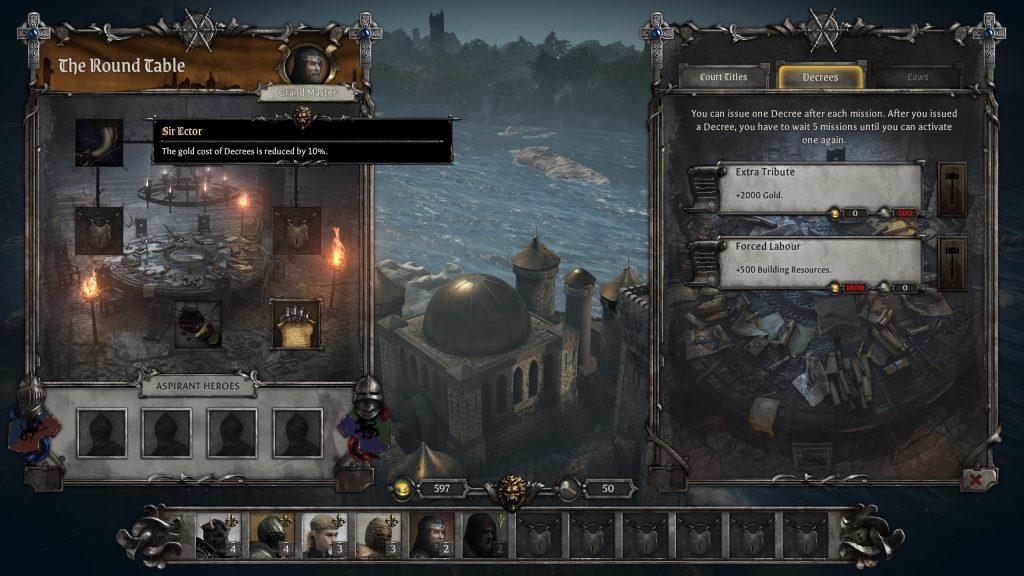
Characters can be put in charge of certain buildings in Camelot which will give bonuses to the party, and these buildings can be upgraded by spending gold and resources. There’s the hospice, cathedral, merchant, round table, training ground, enchanted tower, and a crypt. The merchant allows you to purchase item upgrades and the cathedral upgrades your potion potency, and later can reduce injury treatment time. The crypt is a harrowing reminder of mistakes you made where you can see tributes to heroes you lost to death.
The game ran really smooth, cutscenes were immersive and I enjoyed the environmental effects as I unveiled the fog of war. I loved exploring every inch of each mission map looking for loot and treasures. After a while, some locations became a bit same-same but varied enough, and with the story advancing well it was a minor inconvenience aesthetically. The battles were still dynamic enough to make each mission feel fresh and I liked that I could hold spacebar to fast forward the enemy’s turns. The voice acting for the characters was generally good, giving life to these gruff and grim character story arcs. Some were a bit off but not enough to detract from the overall mood.
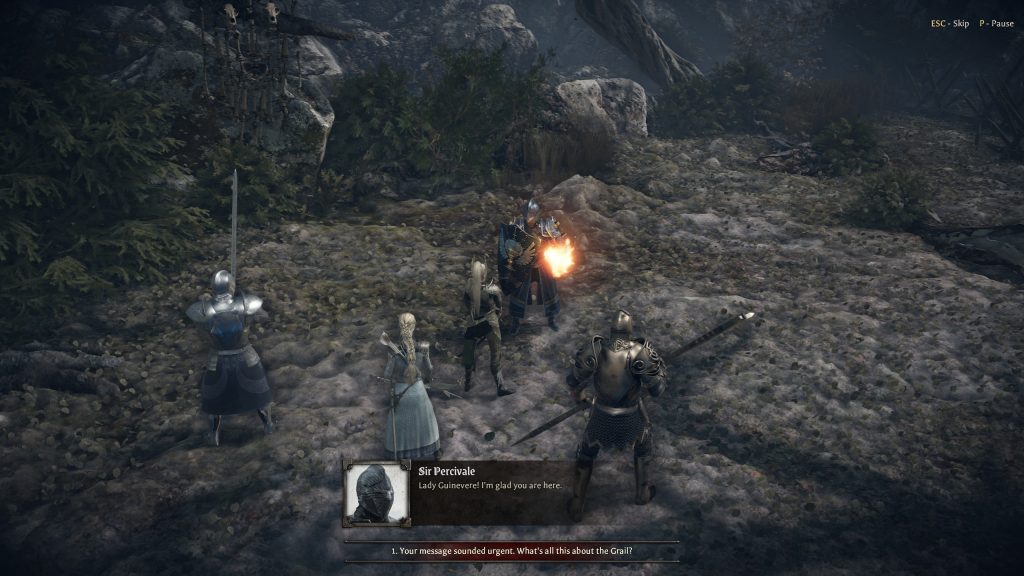
Overall, King Arthur: Knight’s Tale is a fantastic take on the Arthurian story with engaging and satisfying turn-based combat that tests your strategies well. The dark twist to the Arthurian story was a joy to play through and it was great finding new characters to fuss over with the RPG elements. I highly recommend this game to fans of turn-based combat.
This review utilised a key provided by Dead Good PR, and King Arthur: Knight’s Tale is available now on Steam. There are plans to add the game to consoles but no release windows have been mentioned by Neocore.
#roundtablecoop

